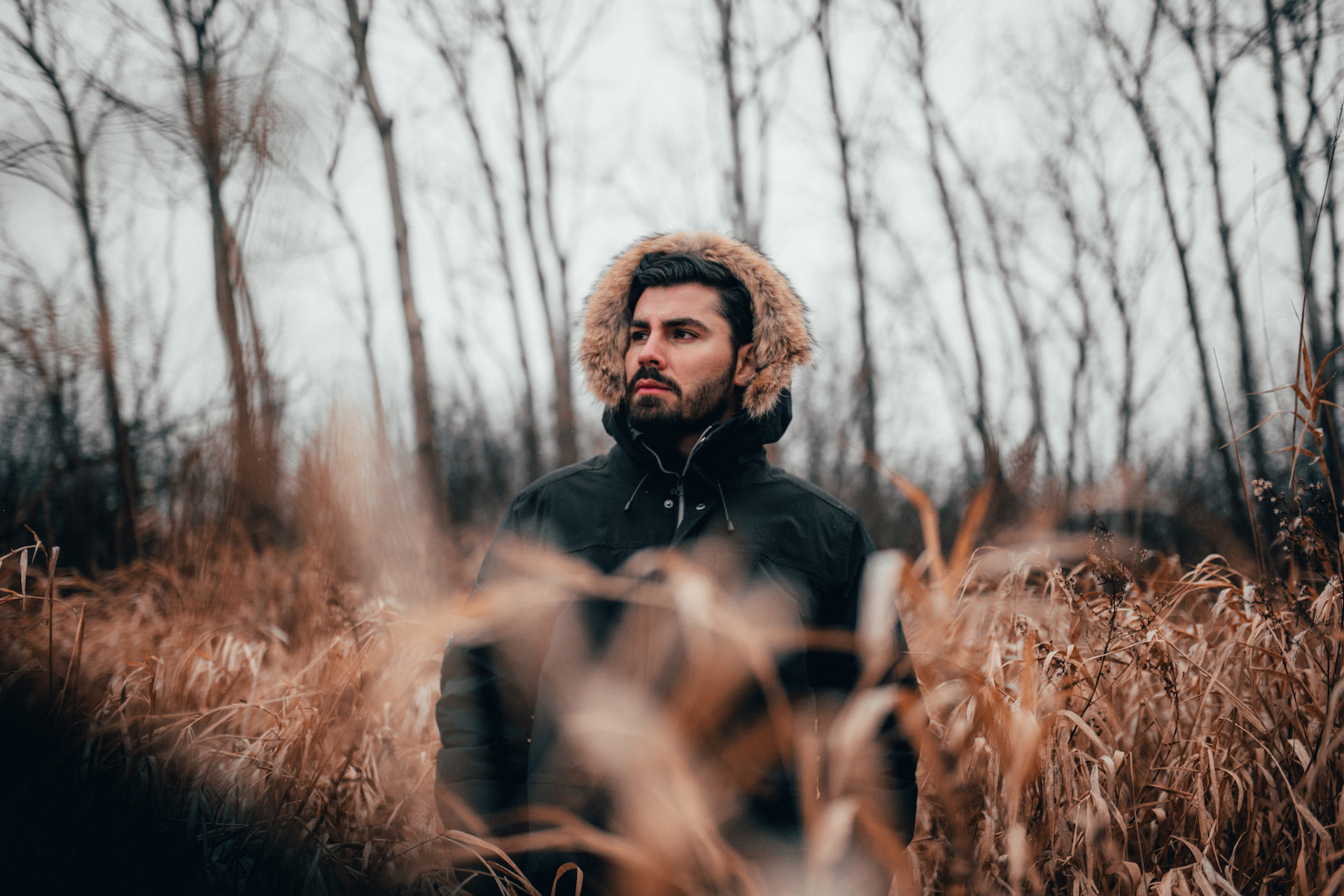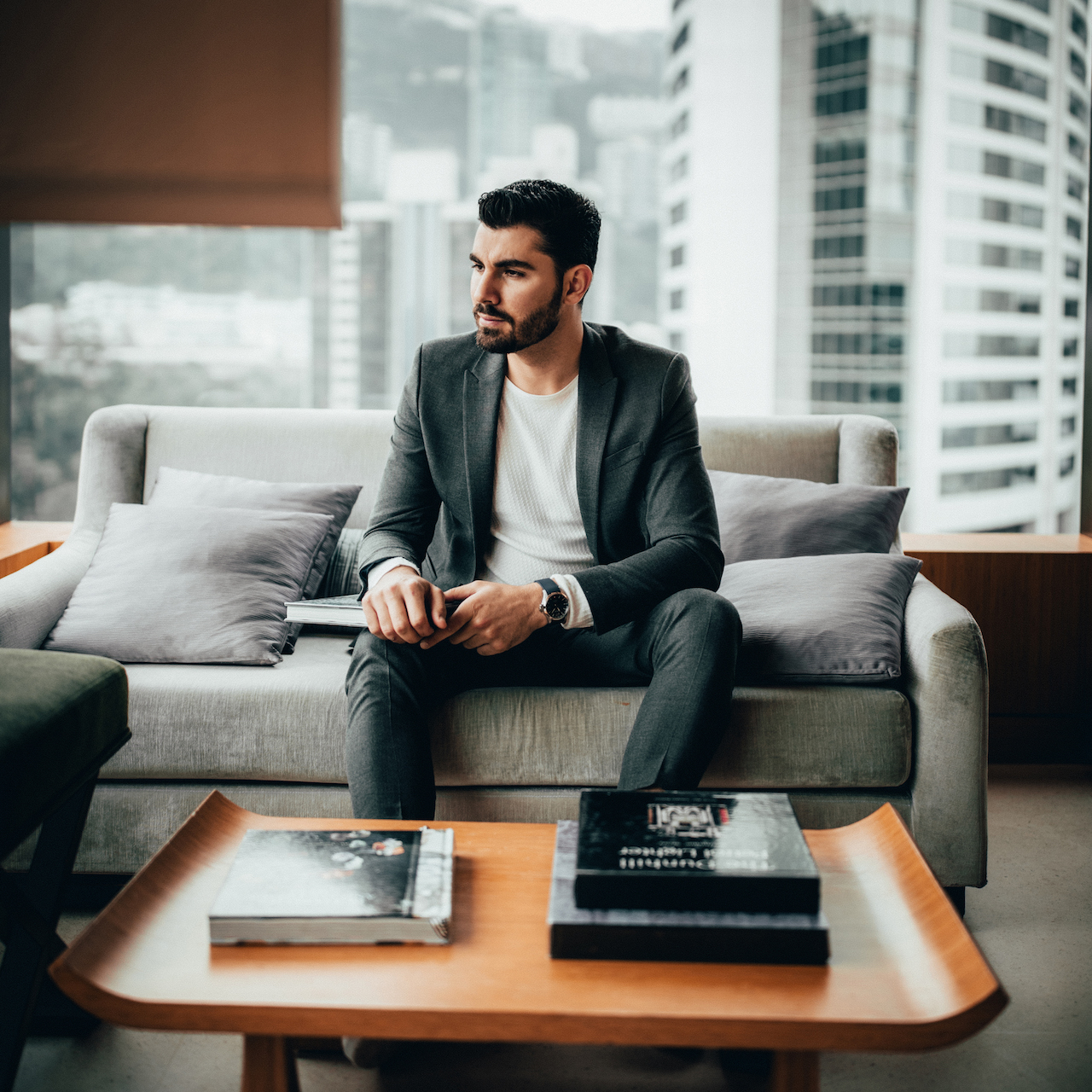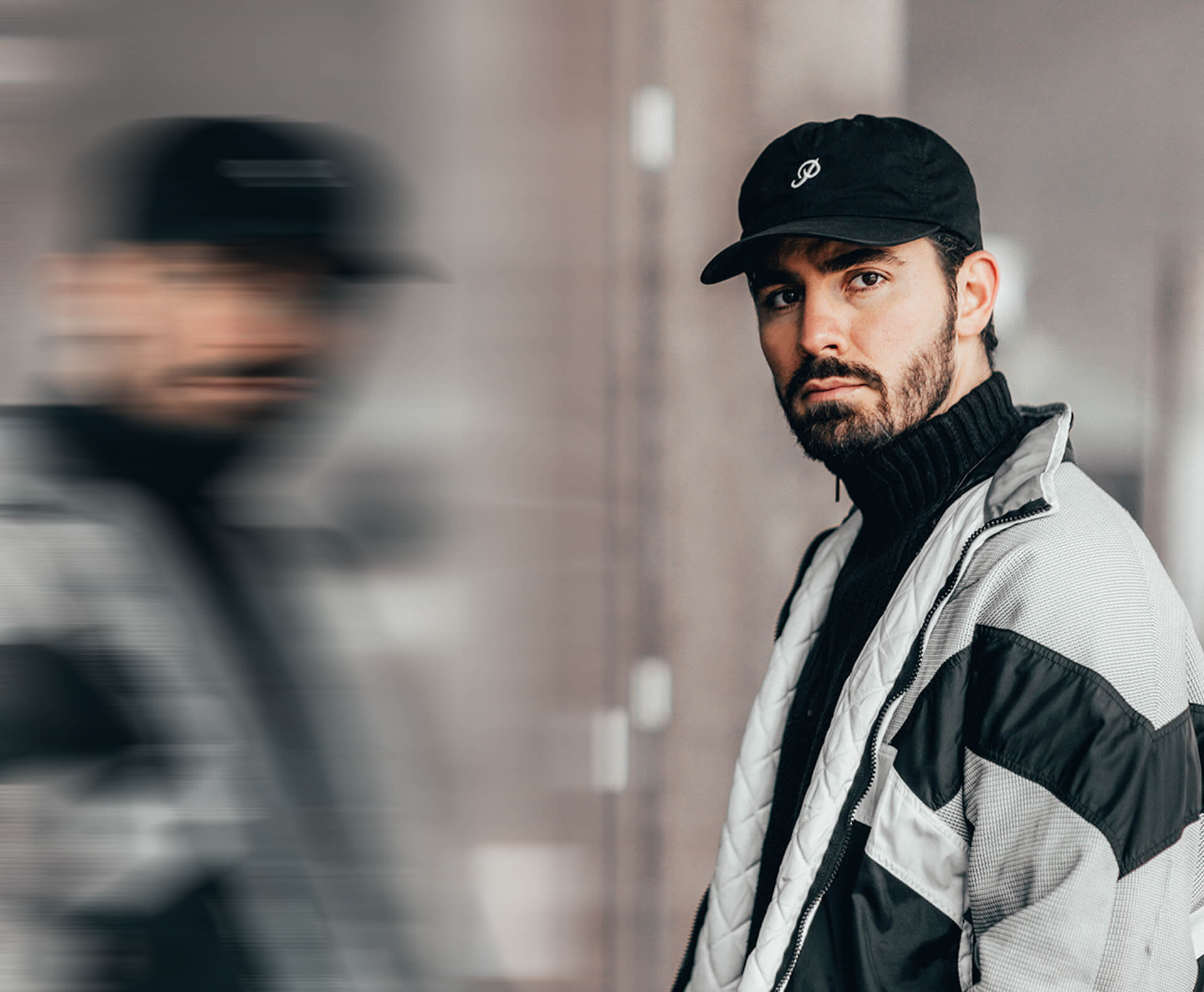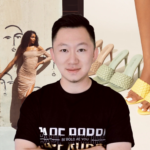Iraqi-Canadian photographer and creative director Alen Palander has become one of the world’s most sought-after content creators and amassed a global following; reaching over half a million people on Instagram and YouTube alone.
Born and raised in Iraq, Palander immigrated to Canada at the age of 6. He would later grow up to pursue his life-long passion for architecture and design, with plans to become an architect. However, while pursuing a master’s degree, his path took a different turn.
Today Alen runs Palander Studios––a successful production house specializing in commercial content creation, campaign development––and travels the globe to work with world-renowned brands including Mercedes-Benz, Air Canada, Longines and more. Yet his most rewarding work is inspiring other creatives to chase their passions.
Learn how Alen’s career path took a worthwhile––yet unexpected––detour into entrepreneurship and why artistic expression can become the genesis of your next right move.
| Company | Palander Studios, AlenPalander.com |
| Founder(s) | Alen Palander |
| Location | Toronto, ON |
| Industry | Photography & Filmmaking |
| Year of Establishment | 2017 |
| Startup Costs | $110,000 |
| No. of Employees | 1-5 |
“Creativity is intelligence having fun.” –– Einstein

YFS Magazine: What were you doing before you became an entrepreneur?
Before starting this business, I was pursuing a lot of education. I did my undergrad at the University of Waterloo: The School of Planning, in Urban Design and Planning. After that, I graduated and began my Masters in Architecture at the University of Toronto (U of T), but I dropped out of that program after the first month in order to pursue this full-time.
YFS Magazine: What inspired you to build a photography business and launch Palander Studios?
I wouldn’t say I was inspired to become a photographer. I was just inspired by the art of photography.
I was traveling quite a lot at a very young age, around Europe, and I was really interested in architecture. I never thought photography was ever in a picture. So I’d visit these places around the world and share the photos with my friends. My friends would be like, “Hey! You need to share these online.”
“I wouldn’t say I was inspired to become a photographer. I was just inspired by the art of photography.”
As a result, I got on social media very early on (when it was still kind of new). Because I was relatively new on the platform (Instagram) it helped expand my horizons in terms of the people that were seeing my work, the scope of work I was doing, and this whole new industry (influencer marketing) that was developing.
In the beginning, it was my friends and family saying “You should do photography as a career,” and then I became a photographer. Next, it was the brands and clients telling me “You should start directing and overseeing the entire scope of a project,” because I had these different ideas of how I thought the industry should be and how products should be displayed.
So, clients were the ones kind of pushing me into the atmosphere, and I said “Hey, okay. Let’s try it out.” I thought “Hey, you know what! This kind of makes sense. And I am the one leading the creative team, creating the conceptual ideas behind the projects, and doing the production process as well so…” Slowly I started venturing into it and looked for a title that made sense. Creative direction was the perfect fit at the time.
YFS Magazine: What is one thing people generally get wrong about the business side of photography and creative direction?
A lot of people underestimate the amount of work it involves. I get this a lot when people sit with me, and I tell them what a day or a moment in my life looks like (especially because of social media and how it only illustrates the best moments). Because I’m in that atmosphere so often, most people just see the best days and the greatest achievements in my life. They don’t see the work that goes into it.

There’s really not a blueprint––in terms of what I’m doing specifically. I’m creating that blueprint for others, so that’s why I got on YouTube and started doing tutorial videos. I wanted to talk to people about the process, specifically for photographers and filmmakers.
As a result, I’ve been doing a lot more workshops, and meetups with other creatives to give them insight and hindsight about what to expect when they decide to venture into this space.
The business of creativity and social influence
YFS Magazine: Creatives often have a hard time monetizing their work. When did you start and how did you approach the process of monetizing social influence?
I remember the first time I ever got paid to do an ad––it was so new. I’ve never even seen anything like that on social media where someone was asked to be given money to share something online and to be able to monetize it.
It was very unusual at the time. I started very early on, and that helped me develop the right amount of knowledge to position myself in the industry and decide how much I should charge accordingly (much of that was based on costs).
I would always sit down and do a budget breakdown of my camera gear costs, how much effort I’m putting in, and how much time I would need to spend on a project. I would then structure these maps and diagrams of what I should be charging in order to balance my goals with what I wanted to achieve in the industry as well as the daily lifestyle I wanted to maintain.
Entrepreneurs struggle in this area quite a lot when they begin new ventures, and that’s why a lot of them fall back and have to rely on investors. Money management is probably the best way to build a successful business. Luckily I had a very good idea of how to properly balance the income I was generating while at the same taking the risks and hiring people to grow and expand my business.
YFS Magazine: Social media influencers often work with talent management firms to pitch brand collaborations. What’s your take on that relationship and how have you approached attracting new clients and brand partnerships?
I’ve worked with various agencies in terms of just scouting work for me. But I’ve never been on a contract basis where I give a certain percentage of my income to anyone. I didn’t have a manager. I had an assistant for a very long time that was helping me manage my emails and clients.

Mainly, I focused a lot on business development, and that is the one thing that allowed me to succeed in this industry. It was me communicating with the brands themselves, not my assistant, an agency or a talent manager.
Before I knew it, it was just me working directly with the creative director (or strategist) of the company which resulted in strong ties with companies. Hence, why I’ve been working with some of the same brands for the last four or five years.
YFS Magazine: How did you land your first few brand collaborations?
On social media––it came through someone finding my channel. But if it wasn’t on social media it was just through word of mouth and people saying “Hey! This guy is creating some cool content, check him out.” That’s actually one thing I did well in Toronto and New York – I took the initiative to put myself in front of agencies.
Traditionally brands and agencies hired PR firms or social media agencies that would manage all of their influencer programs, content creation, etc. Now it’s coming back in-house, and they’re hiring internally to manage those things.
When I first started the industry was still very traditional. So I would email all of these agencies in Toronto and be like “Hey, this is who I am, I’d love to have a coffee with you, chat…”
I don’t think anyone else was doing that. Everyone else was attacking or emailing brands directly, and being like “Hey, I want to work with you, let’s work together.” And the brands were like “Well, we don’t manage that.” So I found this interesting loophole that many people didn’t see in the beginning. That’s also how I built name recognition in Toronto and New York.
I would fly to New York just to meet with an agency, not to work on a project. I’d meet with an agency because I knew they had a pretty sophisticated portfolio of brands they worked with and I could see potential in creating some sort of business relationship.
YFS Magazine: What is a key to your success working with brands?
You have to understand the brand goals well. To do that, you have to do some research on the brand. I consider if it is something I feel good about and if it would make sense. Then there’s always this play on energy. I look for a good vibe with the client and a fit with my brand.
“I look at what they’re doing, and I say ‘Okay, how can I do that, but ten times better with a twist?’”

Also, creating the best work for a brand is not only about meeting expectations, but exceeding them. I look at what they’re doing, and I say “Okay, how can I do that, but ten times better with a twist?” I’ve had companies message me and share how they’ve changed their entire process of how they do social media and tackle their Instagram stories, content, website, blogs and so forth.
It’s not just about creating what they need, but also spinning it off and giving them something to look forward to in the future.
YFS Magazine: How can brands build stronger collaborative relationships with photographers, creative directors and content creators in general?
Every brand has an internal or outsourced team to find the right creatives for a job. The issue comes when brands try to predict what they think is right to the creative director, in my case. It’s one thing to be hired to do a job and another to be hired to do the job and be told the entire process.
When you’re hiring a creative, the whole reason you’re hiring them is so they can create some sort of vision and concept that is different and unique. I’ve decided not to renew brand relationships because of constantly being told what to do and how to approach things.
Not every brand has a creative director that can see the vision of another creative director. Sometimes it’s just a producer from the brand trying to tell the creative director how to do their job. That’s difficult.
YFS Magazine: How has social media impacted the growth of your business?
Drastically! Honestly, without social media, I would not have a business. Social media was the one thing that allowed brands to find me and the everyday user to connect with me. Also because I sell products online (Custom Lightroom Presets), it’s a consumer space as well, so without social media to be honest with you, I don’t think a lot of people would be successful.

YFS Magazine: Which social platform contributed the most to your business growth?
Instagram and YouTube for sure. Instagram is probably the one I feel the most connected to just because I’ve only been on YouTube for the last two or three years. But I’ve been on Instagram since day one.
Creative passion and balancing acts
YFS Magazine: What do you consider your biggest success story to date?
The thing I’m most definitely proud of is the feedback I get in terms of how I’ve influenced people to change their lives or made their day better.
I never wanted to be a photographer. I never wanted to be a creative director. So this was all something I pursued because I was pulled into this world. I was creating for myself out of pure passion. I loved expressing myself artistically. I was able to create art.
“I was creating for myself out of pure passion. I loved expressing myself artistically. I was able to create art.”

Every artist, painter, or musician, creates so that other people can appreciate it. That’s what I was trying to do. I shared photographs and videos of my travels, and what not, in hopes that someone would be like “Oh! That was really nice” or “This made a difference in my life.”
Today, hundreds of thousands (if not millions) of people regularly interact with my work and they give me this positive feedback. I don’t think there’s much more reward than that.
YFS Magazine: What has been your biggest startup challenge to date?
Task management. Managing everything from contracts and agreements and finding the right lawyer to finding the right accountant and delegating tasks to my team.
“Especially when you’re a creative person, organization and creativity do not go hand in hand. So I’m forcefully creating this balance in my head at times.”
One thing I found very difficult, like any entrepreneur, is letting go of something I’ve been working on for so long and allowing someone else to work on it. Especially with my perfectionist disorder (I say disorder because it’s not been helpful at times), I find myself diving too deep into things and not leaving space for someone else to share their input. So I have to let go of certain tasks, step away and define roles (including my own).
Living for adventure, learning, and leaps of faith
YFS Magazine: What do you love most about being an entrepreneur?
It’s funny. I find the challenges of being an entrepreneur the same as when I’m traveling abroad on an adventure. You’re constantly thinking through things. At the same time, creating different scenarios and options so you can head the right way. This is similar to building your brand properly.
Over the years I’ve been working and building my brand, and I’ve had to focus and determine the right path and how can I channel an appropriate amount of energy and successfully build it the right way.
YFS Magazine: What engages you outside of your work?
TED Talks. I find that the industry is obviously very challenging, but I don’t feel like it’s intellectually stimulating. While other industries like the sciences, math, engineering, and what not––they hold a much more research-based focus and I really enjoy that.
I like learning about all the things that make me think about the world and how things work. Because I came from a design background and tried to pursue engineering, I always try to connect with that space as much as possible.
I don’t have time to read books as often as I’d like, so TED Talks is one way for me to keep up with new knowledge that’s generated around the world, new ideas, and people who are making a huge difference around the globe.
YFS Magazine: What is your advice for aspiring entrepreneurs?
You have to go for it! For the longest time, this was an issue for me. I remember sitting with the dean of U of T’s Faculty of Architecture, and it took me a long time to come to a point where I was confident in my decisions.
“We have to stop asking if we’re making the right decision and just go for it.”
At the time it may have been a little bit easier because I already had a degree. So, not pursuing a second degree wasn’t going to end things for me. But at that same time, since I was five years old, I wanted to be an architect.
It’s about taking that leap of faith and saying “I’m going to do this and put 100 percent into it.” I know everyone says that, but that is the ultimate way to succeed at something. If you don’t succeed and it didn’t work out, it’s not because of a lack of effort but because it was probably not the right thing for you to pursue.
Also, be as sophisticated and knowledgeable about your industry as possible.
I remember when I made the decision to become an entrepreneur. I researched every ounce of it. I didn’t want to sit in front of someone, get asked a question and be uncertain about the answer. Pursuing something fully means understanding it in its entirety.
© YFS Magazine. All Rights Reserved. Copying prohibited. All material is protected by U.S. and international copyright laws. Unauthorized reproduction or distribution of this material is prohibited. Sharing of this material under Attribution-NonCommercial-NoDerivatives 4.0 International terms, listed here, is permitted.




